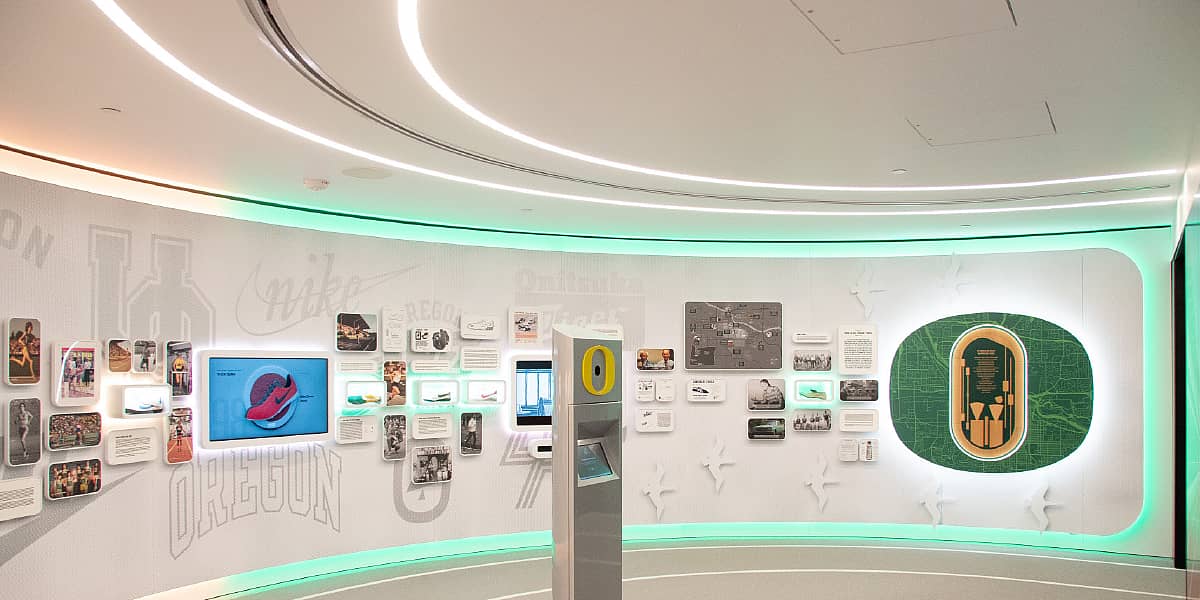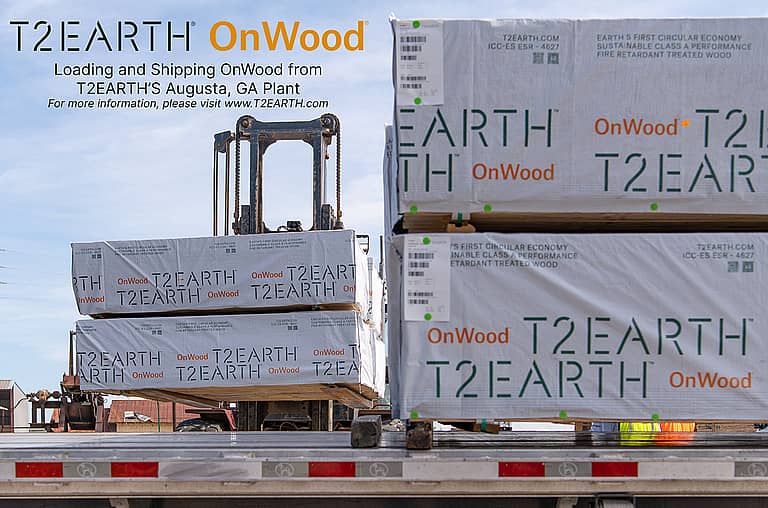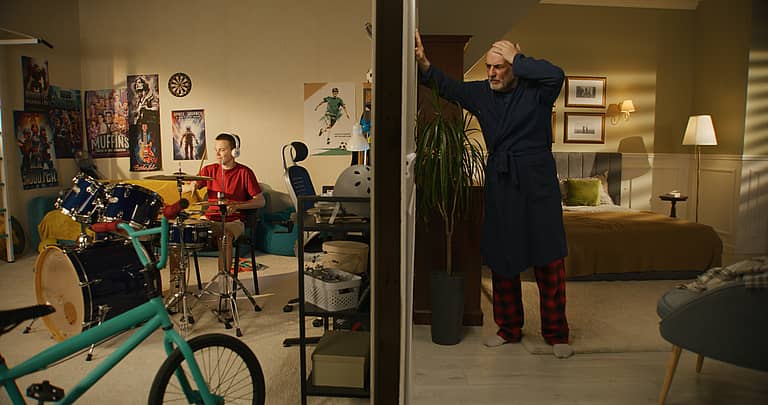Over the past six or so years, Western Partitions, Inc. has been in expansion mode, and today the Wilsonville, Ore.–based head office oversees nine branches, from Seattle and Salt Lake City to Phoenix and Albuquerque. Operating with 1,500 field staff and 300 office personnel, the contractor does a brisk business—about $400 million annually.
Specialty and custom ceilings represent $20 million to $30 million of that annual volume and while that might seem small in the scheme of things, it is a segment of work that has grown significantly over the past seven to eight years and is proving to be an increasingly important part of WPI’s portfolio.
“Almost every job we look at today has specialty or custom ceilings,” says Dustin Deller, the ACT department manager based in Wilsonville, a suburb of Portland. The specialty work continues to spread through many of the contractor’s commercial sectors. In institutional, for example, WPI does a range of high end specialty and custom work at universities and colleges.
Surprisingly that work has been trickling down to high schools as well. “We have bid on a few jobs where we thought they (owners) were not going to like the high price of these ceilings, but they ended up going through and being built,” Deller explains.
Eye-Catching Ceilings
Deller says more owners across the commercial spectrum are choosing striking interiors with eye-catching ceilings—renovations that are often set in open concept environments. A typical remodelling involves replacing traditional ACT lay-in ceilings with custom or specialty products. Cloud and linear baffle ceiling systems are popular.
WPI project estimator Jason Salisbury points out that “open look interiors” are particularly popular in office renovations, and owners want their clients and staff looking up. Data centers are a hot market as well for WPI.
WPI is no stranger to casino remodels either, having installed a number of metal and wood ceilings in gambling halls in Reno. But WPI’s most notable project underway in that gambler’s paradise is the Renown South Meadows Medical Center, a large hospital. WPI’s master contract, which includes several individual scopes, is highlighted by a bronze colored “flashy metal ceiling” set in the hospital lobby, says Salisbury, who has been with WPI 17 years, six of those years as an estimator.
WPI project manager Nikki Wilson says one of hospital contract’s challenges is coordinating lay-ins with multiple trades, including electrical and mechanical required where the work scope includes color-matching fixtures and diffusers into the grid. The project is located in Sparks, a suburb of Reno.
Ballroom Blitz
WPI recently wrapped up a wall and ceiling contract for the 35-story Ritz-Carlton Residences in downtown Portland. The custom wood ceiling in the ballroom features 2 x 2 to 3 x 5 panels hung off a grid system. “It is all running at different angles and each panel is a different size,” Says Deller.
Along with the wood ceiling is a seamless product comprised of 4 x 8 unfinished tiles. The tiles are screwed to the grid and then taped and finished “to look like one big monolithic ceiling,” says Deller. “It looks pretty fancy.”
Meeting that end goal in the ballroom hasn’t been easy. WPI saw the design change several times before the final selection. “The challenge for us was to color match it with what the architect wanted,” says Wilson, adding “it took several tries” through control samples sent to the manufacturer before a satisfactory stain was found. It took a field crew of 12 roughly three weeks to complete the ballroom ceiling.
A Supplier in Germany
The Portland International Airport has been a mainstay for WPI in recent years, and the contractor won the acoustical ceiling of the year award from the Northwest Wall and Ceiling Bureau for a contract at Concourse B recently. Currently, WPI has more than half a dozen custom ceilings on the go at the airport, including a wood linear grille system and an unusual-shaped perforated metal acoustical ceiling supplied by a ceilings manufacturer based in Germany. For the 30,000-square-foot project practically every metal panel is a different size or shape.
Having a supplier in Germany on a large specialty scope job in Oregon presents challenges outside the norm for WPI, which usually works with suppliers in the United States. The time zone differences hamper meeting arrangements needed to work through shop drawing details on the Terminal Core airport project, explains Wilson, who has been a project manager at WPI about six years.
“The actual measurements in the field can vary from what is on the plans so it is important to be dialed in when you are ordering speciality sizes in certain ceilings. Sometimes the communication between the field and the manufacturer can drag out a really long time,” she adds.
Working with High Material Costs
On projects where specialty ceilings prove to be “budget busters” at bid time, less costly alternatives—known as “voluntary equals”—that look similar and have comparable acoustical values are substituted, says Deller. A high-end custom wood ceiling, for example, might be replaced with metal panels that feature a simulated wood look.
PET felt panels, which are comprised of environmentally friendly material including recycled bottles, are another example. About 80% of WPI’s contracts specify PET panels. Commonly sold in 2 x 2, 2 x 4 or 4 x 8 sizes, the panels are offered in a range of colors, can be quickly installed directly to a ceiling using glue, screws or clips and are price-competitive with standard white grid tile ceilings. “They give an open air look and provide acoustics without a big price,” explains Deller.
Salisbury says in today’s world almost every project is over-budget, and one of the reasons is because architects don’t factor in all the costs associated with speciality ceiling products from day one. “They might get the price of the material from the manufacturer but not a price for the components to hang it, the cost of contractor margins/markups, labor rates … and things that play a part in the real price. Something they think what they are getting for $15-$20 a foot could be $50-$65 a foot, and they don’t have that in their budget.”
That gives reason to switch to PET felt panels and felt bafflers, both on the upswing in open concept offices where owners require high acoustic values and “some flash” without a high price, the project estimator says.
Ceiling Design
Deller says the design of a custom ceiling can entail plenty of work even before the contract is awarded. Often calculations on the material are based on guesswork as to what the architect wants because information provided is “very general. You are bidding off a generic plan with generic details. It is difficult if you have an estimator who is doing a custom ceiling that he has never seen or built anything like it before because there are a lot of things they can miss.”
It is only when the contract is awarded that detailed shop drawings are created. “We take all the measurements and they are put on a shop drawing that goes back to the vendor who comes up with the final sizes of the panels,” says Deller.
Seismic codes can throw a wrench into a ceiling design plan, especially in western regions of Oregon where regulations are stringent. One of the first issues WPI estimators examine when bidding is structural notes on the seismic category and how it will affect the ceiling’s design. In Oregon cloud ceilings (typically not attached to all four walls), for example, have to be professionally engineered. Some ceilings require suspension from aircraft cables, and steel studs (seismic post) are anchored to the deck every 12 feet and tied to seismic wires from all corners of the room for stability, says Deller.
Grid and tile ceilings in hospitals must comply with seismic code if they are more than 1,000 square feet. “It can add a hefty price to a ceiling,” says Deller.
Lingering Effects and Lessons Learned from COVID-19
While today’s market has its challenges, WPI would like to forget about the days of the pandemic. Although some of the effects of COVID-19 continue to be felt in various regions and centers, such as Portland, construction activity is steady just outside Oregon’s largest city where the specialty ceiling segment is growing. Material lead times are still up a bit from pre-pandemic times when 10-12 weeks was common for custom ceiling work, but the contractor is not experiencing the 16- to 20-week wait periods it did during COVID-19, says Deller.
The pandemic was also hard on labor. “At times we had jobs that wiped out our whole ceiling crew, leaving them off the job for two weeks because of health concerns or the rules in place.”
Wilson adds that nobody wanted to hold their prices during the pandemic because of market uncertainty, but subcontractors like WPI were asked to still hold their bid prices. “It was a huge challenge,” says Wilson.
One pandemic side effect still a concern is pricing, as the cost of materials remains high. While some costs can be passed on, WPI’s margins are slightly down from pre-pandemic times.
“We get a quote on everything before we turn in a bid, but where it gets tricky is when the project doesn’t start for, say, two years,” Deller explains. “Vendors might typically give product escalators of 5% every quarter to six months but it still leaves guesswork or creative estimating on the table on late-start projects.”
Adds Salisbury: “The main thing is nobody wants to guess anything outside of 12 months but when we’re forced to bid these jobs two years out, we’re only going to get a 12-month look ahead. It’s the biggest challenge. Sometimes our estimating on what we think the market is going to be hits the mark, sometimes we’re low and other times we are a little over-covered.”
The project estimator notes that because so many construction and design employers are understaffed, it can take anywhere from three days to weeks to get a quote on material. That is more time than they often can afford. “The problem is our bid dates never change, so we essentially have to guess or try and get a ballpark figure before we get a quote, or simply exclude something until our quotes become available,” he says.
The days when estimators could bring some material samples to an architect’s office and figure things out face-to-face are less common now because so many architects work remotely. “We do a lot of Zoom conferences but it is not the same as when you are in front of the architect and other trades trying to unravel issues,” says Salisbury.
Still, there are positive take-aways from the times. Software for estimating and pricing jobs are examples. Salisbury appreciates that the software developers “take input” from contractors to make frequent updates to software in accordance with industry needs. “They are pretty responsive if you need something added on,” he says. “As a whole it is a pretty good system from an estimator’s standpoint.”
“We also use Bluebeam a lot, which allows us to share with fieldworkers,” adds Wilson. “I can upload field drawings that the guys in the field can access and approve using their iPads. They can also do their own markups on the drawings, which we can upload so I can see in the office. It’s a pretty cool feature and helps to make our work easier.”
Visit wpibuilds.com to learn more about this AWCI member company’s work.
Don Procter is a freelance writer in Ontario, Canada.





